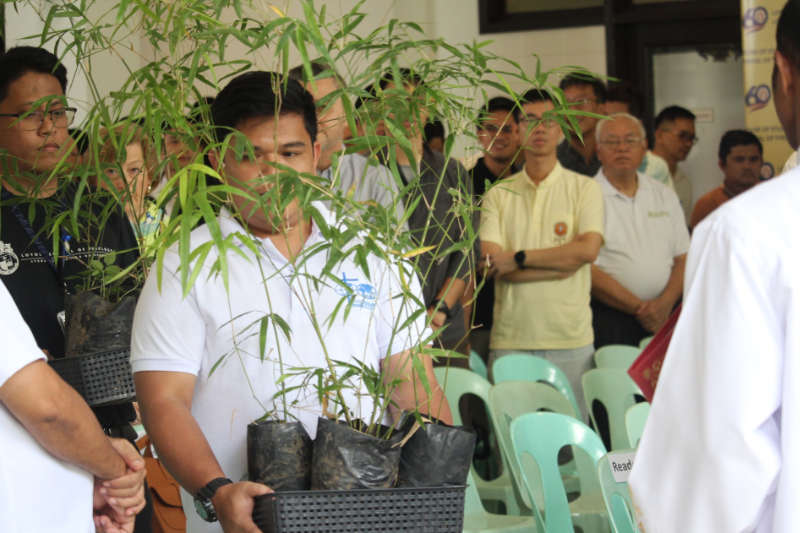Homily, Season of CreationMt 6,24-34; Wis 13,1-9
We started our celebration with the blessing of 60 seedlings which will be planted in Angono, Rizal in gratitude for the 60 years of LST and LHS. It was perhaps by some stroke of luck that as I began preparing this homily last night, I chanced upon a video clip about an interesting tree that endemic to the Philippines. It is called the Malakatmon or dillenia luzoniensis. It is interesting because it is a tree that eats nickel. It is an “obligate metalophyte” meaning it does not only survive in nickel rich soil, but it needs it to survive. It absorbs a huge quantity of the metal and stores it in its tissues without being poisoned. Why is this trivia important? In areas that have been damaged by mining, this tree could help clean up the soil in a natural process called phytoremediation. Nature has ways of healing itself. But what do we do to contribute to this healing process?
My dear friends, the 60 seedlings are not just a symbolic gesture to mark our anniversary or to have something to do today to celebrate the season of creation. Imagine these 60 seedlings planted and fully grown as trees 15 or 20 years from today. They will not only be beautiful to behold but they will be a testament to what each of us here present has and will be doing to care for our common home.
We are beyond worrying when we talk about the destruction of the environment. We are experiencing frightening extreme weather conditions. Just last Monday, at midday, there was a sudden heavy downpour. It literally felt like heaven’s flood gates were swung fully opened. I watch helplessly as water quickly accumulated on our terrace at the third floor. The drains are no longer big enough to accommodate the amount of rain that poured. Just behind the parlor rooms here, a veritable waterfall was beautifully cascading but in the wrong place. In other parts of the campus, students were seen traipsing on improvised bridges because parts were flooded. Mind you, this happened only in a matter of 30 minutes. We are planting more concrete on our land and there is lesser space for trees and gardens and nature. Planting these 60 seedlings is the start of planting for the future, planting these 60 seedlings is the start making peace with creation. I say the “start” because we certainly need more than these 60 to have a future and to be at peace with creation.
Our first reading from the book of Wisdom talks about how we are charmed by the beauty of creation—the wind, fire, the powerful water, and the stars in the sky—so that we take them “to be the gods of the world”. But they pale in comparison to the beauty of the creator from whom all of creation emanates. The sad state of our environment calls not only for a reconciliation with creation but with the creator. He is after all, as Jesus tells us in the gospel, the Father who feeds the birds in the sky, who makes the flowers of the fields grow and who decides how long each of us should live. Making peace with creation is making peace with our God.
What does this peace entail? It is appreciating each droplet as a gift from God not only as creator. That seems too detached. But when we appreciate him as nurturing father who delights in us, his children, we are truly connected.. We can only respond to his gifts of love with nothing less than our filial love and gratitude.
We thank our Lord and creator for the wondrous world he has given us and we firmly resolve to honor it with our care. As the Malakatmon tree naturally heals the soil, may we, too, as custodians of God’s creation, be instruments of healing and peace in this land.
Fr. Rogel Anecito L. Abais, SJ
October 1, 2025


